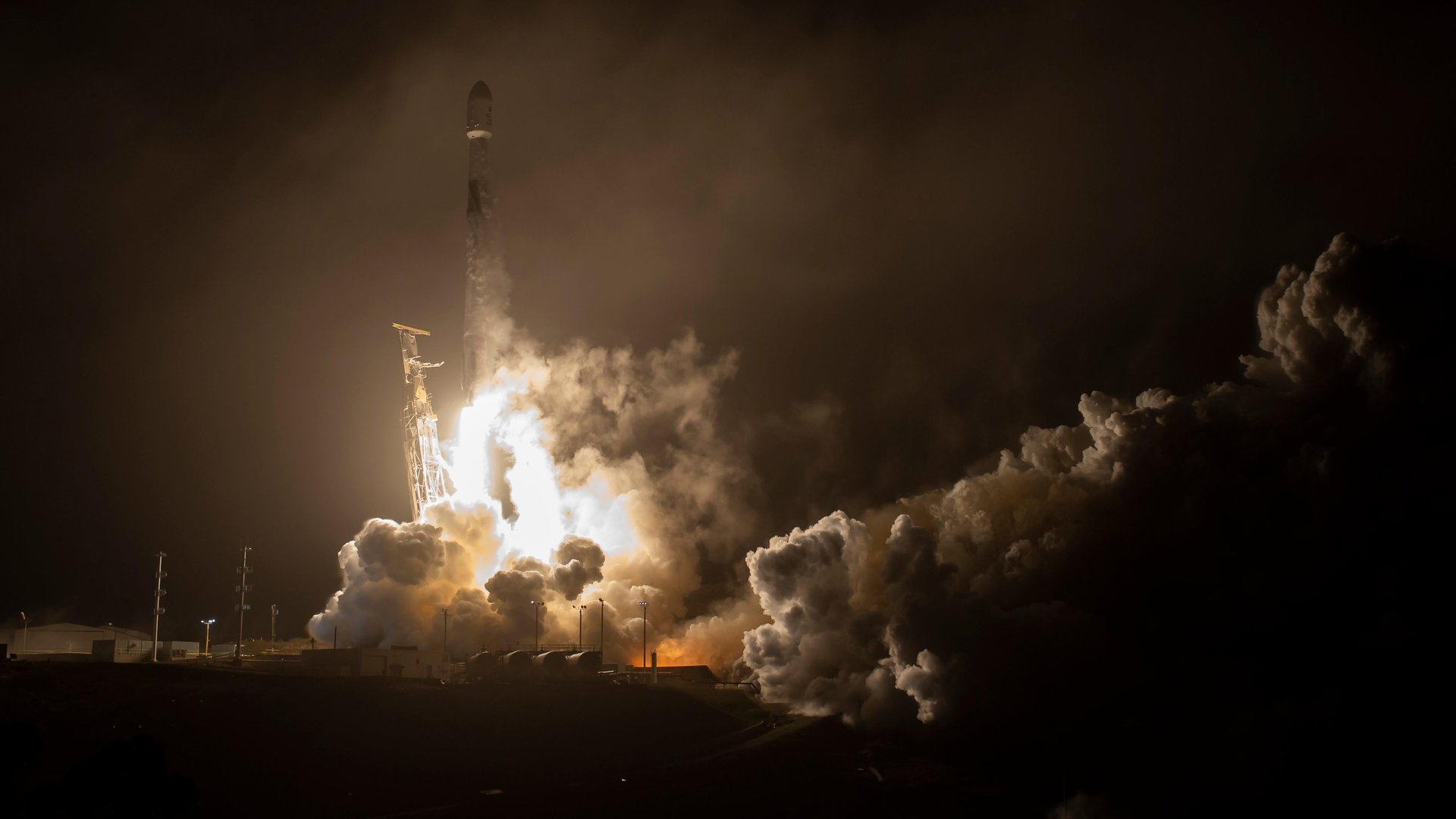NASA is taking its first shot at deflecting an asteroid
It's clobberin' time for the DART (Double Asteroid Redirect Test) mission

There’s a lot to be said for the dinosaurs that once dominated the Earth. The big, weird reptiles held it down for millions of years, leaving behind fossilized skeletons, or evolving into birds.
One thing they were missing?
“The dinosaurs didn’t have a space program to help them know what was coming,” Katherine Calvin, NASA’s chief scientist says. “But we do.”
The dinosaurs’ extinction came after a massive asteroid impacted the Earth in modern-day Mexico, which scientists believe accelerated climate change that wiped out three-quarters of the life then on Earth. To help avoid an as of yet theoretical repeat of that fate, the US space agency has launched a spacecraft that will crash into a distant asteroid on Sept. 26 at 7:14pm eastern time.
The DART (Double Asteroid Redirect Test) mission will demonstrate for the first time that humans can take action to deflect a potentially deadly asteroid approaching the planet. While the target of this mission isn’t a threat to Earth, crashing into it is expected to reveal important clues about the nature of asteroids. This experiment has required building a robot, just larger than a meter cubed, capable of navigating autonomously 7 million miles from Earth to hit an object smaller in diameter than two football fields.
DART was launched in Nov. 2021 onboard a SpaceX Falcon 9 rocket and has spent the intervening time heading for a unique pair of asteroid that are relatively close to Earth in astronomical terms. The larger one, Didymos, is about 800 m across, and unlike most asteroids, it boasts a smaller partner that orbits around it, called Dimorphos, about 160 m across. This arrangement is important to the mission because telescopes can spot Dimorphos circling Didymos and estimate its speed. The DART spacecraft will smash into Dimorphos going 14,000 miles per hour. Mission planners expect that could slow Dimorphos’s orbital speed by about 1%, a change that should be noticeable even to distant observers.
DART’s plan of attack
As DART approaches its target, it will be sending a series of images back to Earth, about one per second. It will take about 38 seconds for each image to cross the space between DART’s antenna and the radio dishes operated by NASA’s Deep Space Network. Forty minutes before impact, the little spacecraft’s navigation computers will finally see Dimorphos and lock on to it. When it is 2.5 minutes away, its navigation system will shut off. Its last image will be sent 2.5 seconds before impact. And then, “we’ll say loss of contact and we’ll celebrate,” says Elena Adams, the mission systems engineer at Johns Hopkins University who led the design of the spacecraft.
To figure out what happened after impact, we’ll have to wait several days as astronomers using different techniques, including radar and visual observations, race to capture data about the impact and interpret what it means. A tiny satellite built by the Italian Space Agency, called LICIACube, was deployed from the DART spacecraft last week. Equipped with two cameras, scientists hope it will be able to capture images of the impact and the resulting plume of debris that can be sent back to Earth.
The final evaluation of the experiment will come years from now, when a spacecraft built by the European Space Agency, called Hera, visits the asteroids and examines the results of DART’s impact.
Asteroids: Chunks of rock or bowls of soup?
Deflecting asteroids may be a tricker task than you’re imagining: Rather than big chunks of solid rock in space, recent scientific expeditions have suggested that asteroids are far more loosely bound, behaving almost like fluids. A NASA mission to grab a sample from the asteroid Bennu in 2020 revealed that its surface was more like a ball pit than solid ground, and that the space probe might have sunk right in had it not fired its thrusters.
If asteroids are less solid than expected, it may be more difficult to change their course with a kinetic impact, which might suggest pursuing different techniques to divert asteroids. DART’s mission planners say they are confident that their spacecraft will be stopped when it crashes into Dimorphos, because spectral analysis of its larger neighbor shows it to be denser than Bennu. However, scientists have never seen Dimorphos as anything other than a dot passing in front of Didymos, and aren’t even sure of its shape. There are sure to be surprises in store as DART transmits back the first (and its last) images of the asteroid.
Hopefully, there aren’t other surprises in store for us back on Earth. Lindley Johnson, NASA’s planetary defense officer, emphasized that having the ability to deflect a dangerous asteroid is only valuable if we know where they are with enough lead time to do it. While the largest and thus most terrifying asteroids have largely been cataloged, there are still plenty unaccounted-for, near-Earth objects large enough to destroy entire cities or region. Finding them efficiently will require using an infrared space telescope, since ground-based optical telescopes aren’t as good at figuring out the size and orbit of the asteroids they spot. The good news is there is a program building just the thing, called NEO Surveyor, and it recently passed a preliminary design review at NASA’s Jet Propulsion Laboratory. The bad news is that the Congress has yet to fund it completely, and now it won’t launch until 2028, two years later than hoped.
“Luckily, time is somewhat on our side,” Johnson said. “An asteroid impact is an extremely rare event, maybe once a century is there any asteroid that we really worry about.”